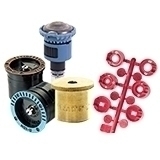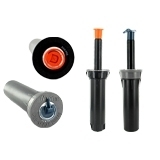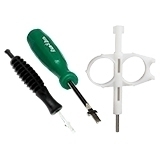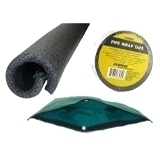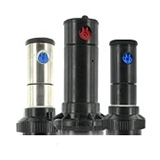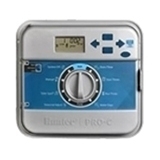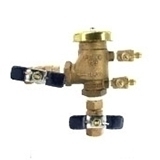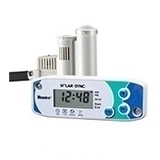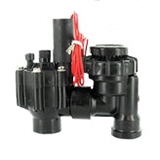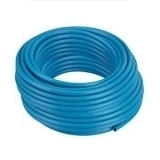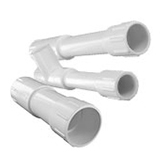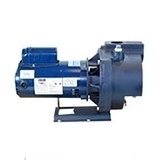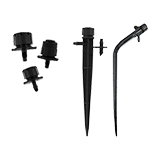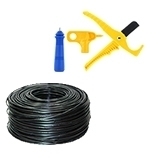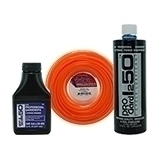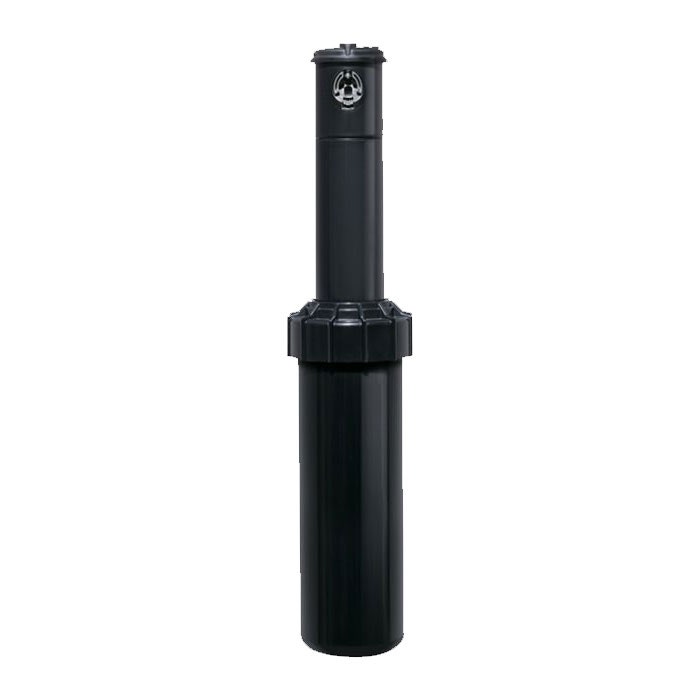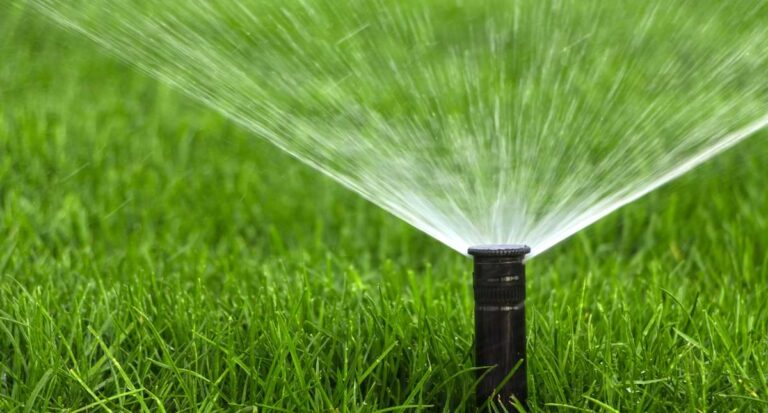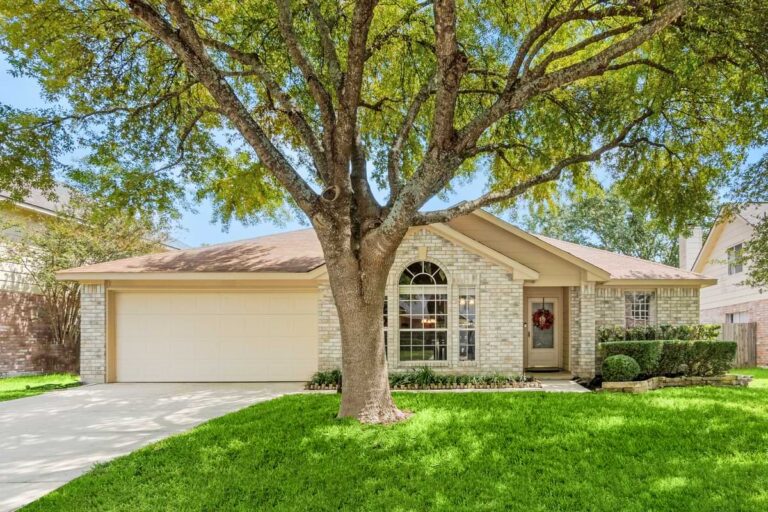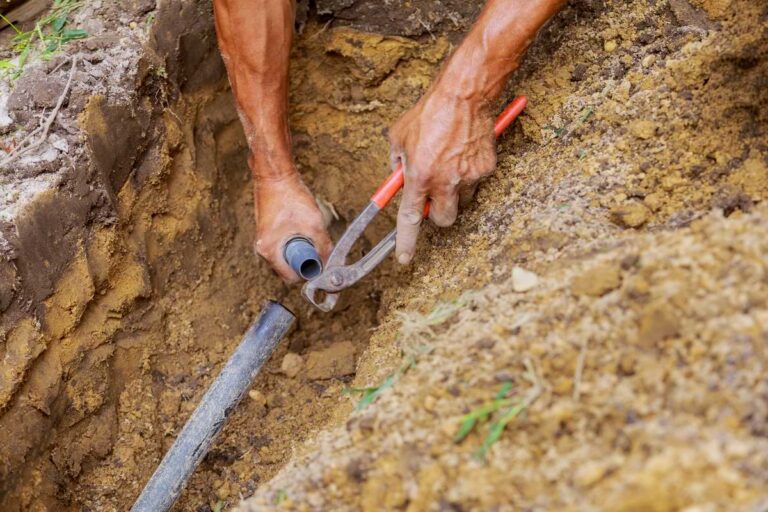Table of Contents: Underground vs. Above-Ground Sprinkler Systems
Automating your lawn and garden watering with a robust irrigation system can be extremely rewarding. Instead of going out every morning with the hose, your sprinklers can take care of the watering for you. Still, choosing the right irrigation system can make all the difference. Homeowners and landscapers will need to start by choosing between an underground and an above-ground sprinkler system. Each type of sprinkler system comes with its own advantages and limitations, so it’s important to pay attention to the differences in their installation process, cost, maintenance, and appearance.
What Is an Underground Irrigation System?
An underground irrigation system is a more permanent watering solution that resides below the surface, ready to deliver water directly to your lawn or garden. It consists of a network of buried pipes connected to in-ground sprinkler heads or drip emitters that pop up to release water when the system is activated. These systems are often automated with timers and control valves, allowing for precise and efficient watering schedules.
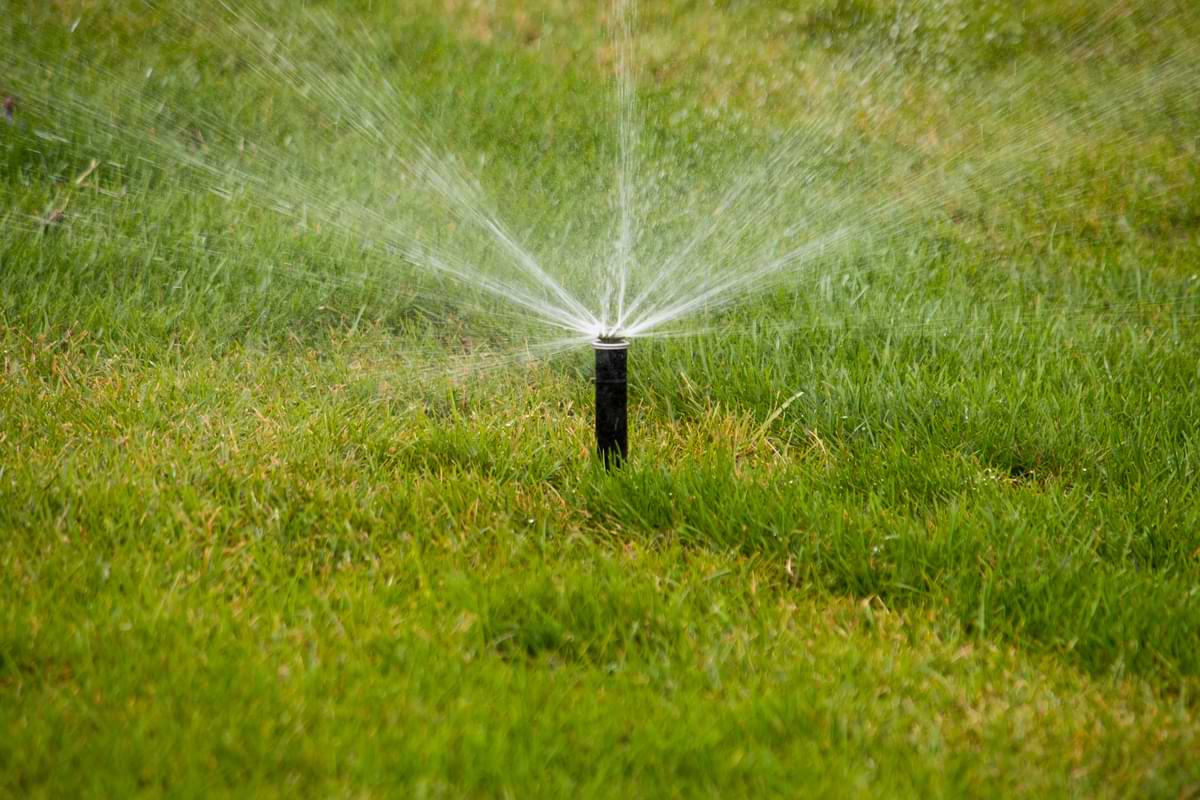
What Is an Above-Ground Irrigation System?
An above-ground sprinkler system distributes water through hoses, sprinklers, or drip lines that are placed on or just above the surface of the soil. Above-ground systems are usually designed to be moved or reconfigured as needed. Portable, above-ground sprinklers are very popular for seasonal watering in smaller residential landscapes.
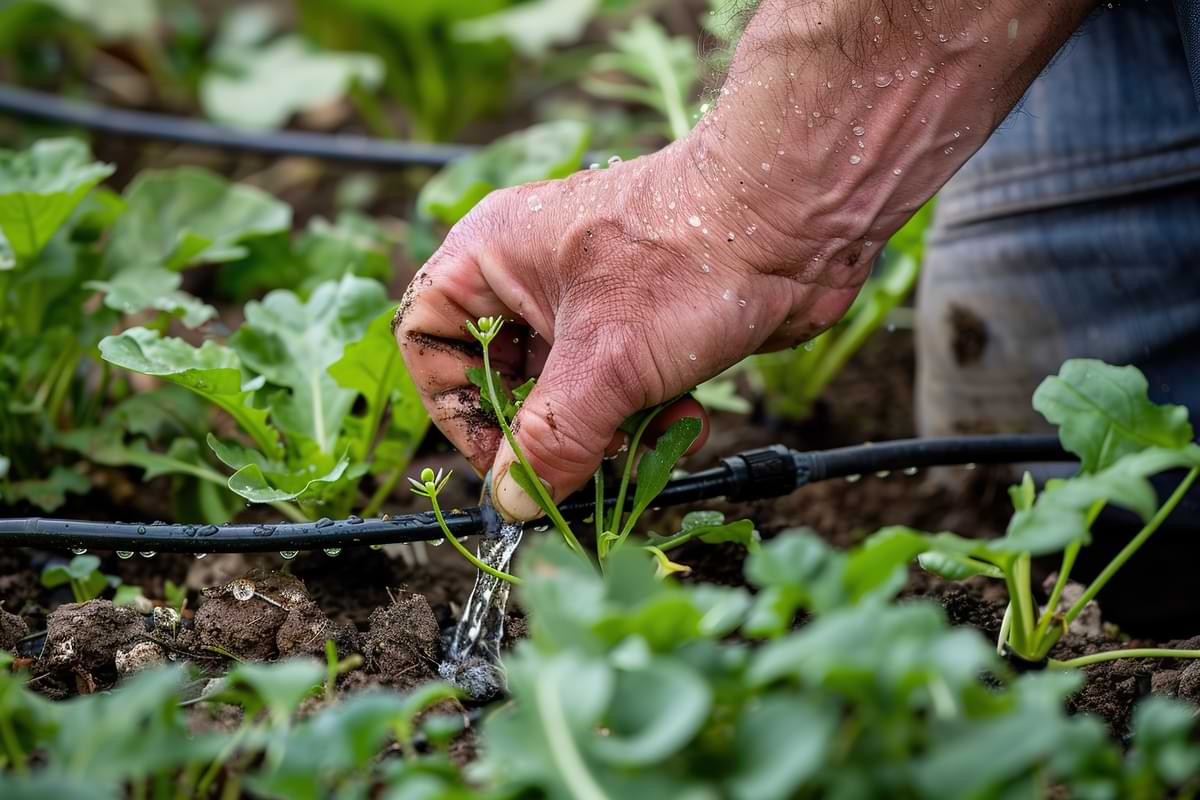
Installation
Perhaps the biggest differentiating factor between above-ground and underground sprinklers is the installation process. As you might expect, installing an underground sprinkler system requires a bit more work than installing an above-ground one, as it involves digging trenches to bury pipes and connecting in-ground sprinkler heads to a main water supply. A backflow preventer, control valves, and an automatic timer are also installed to regulate water flow and scheduling. Installing an underground sprinkler system often involves the use of specialized tools and may require professional help to ensure proper zoning and coverage.
In contrast, above-ground irrigation systems are much easier to set up. They usually involve connecting hoses to a spigot and placing portable sprinklers or drip lines around the yard. Since there is no digging involved, installation is quicker and less invasive. This type of system is ideal for DIY enthusiasts and can be adjusted or relocated without digging, making it a convenient option for seasonal watering.
Conclusion: Underground sprinkler systems require more labor-intensive installation with buried components, while above-ground systems have a quick and simple setup process.
Water Efficiency
Underground sprinkler systems are generally more efficient at delivering water evenly and directly to the root zones of plants and grass. These systems feature pop-up sprinkler heads and drip irrigation lines that can be precisely adjusted for specific zones. Because they’re installed flush with the ground, water loss due to wind drift and evaporation is minimized. Automated timers and zoning also allow for scheduled watering, which helps avoid overwatering or underwatering.
Above-ground sprinkler systems often rely on oscillating sprinklers connected to hoses, which can result in inconsistent coverage, particularly on irregularly shaped lawns or sloped terrain. These systems are more prone to water loss from evaporation and wind, and because they’re manually placed, user error can result in areas with too much or too little water. While timers can be used, above-ground systems typically require more hands-on adjustments to maintain efficiency.
Conclusion: Underground sprinkler systems are more efficient due to precise watering with minimal water loss, while above-ground systems are more prone to evaporation, wind drift, and manual errors.
Maintenance & Durability
Underground sprinkler systems are generally more durable because their components are mostly buried below the surface. This will protect your irrigation system from foot traffic, lawn care equipment, and harsh weather. However, since they’re hidden, detecting and accessing damaged parts can be a bit more challenging. Despite the added complexity, underground systems tend to last longer when properly maintained.
Above-ground sprinkler systems sit on the surface, making them more vulnerable to physical damage from pets, kids, lawnmowers, and UV rays from the sun. All of these interactions can cause components to crack or degrade over time. However, compared to underground systems, they are much easier to maintain and repair. You can usually spot leaks or broken parts quickly and replace them without much effort or cost.
Conclusion: Underground sprinkler systems are more durable but harder to access and repair, while above-ground systems are less durable but much easier and cheaper to maintain.
Cost
Generally speaking, installing an underground irrigation system is more expensive than an above-ground one. Underground installation typically involves trenching, piping, sprinkler heads, valves, timers, and sometimes even a professional contractor. Maintenance and repairs, which may require digging or professional help, can also add to the long-term cost.
Above-ground sprinkler systems, on the other hand, are far more affordable and often DIY-friendly. A basic setup with hoses and portable sprinkler heads might even cost under $100. Since installation is simple and repairs are inexpensive, ongoing costs also remain low. Most individual hoses and sprinkler heads are usually available for a few dollars.
Conclusion: Underground sprinkler systems are more expensive due to complex installation and maintenance needs, while above-ground systems have lower upfront costs and are inexpensive to maintain.
Aesthetics & Space
Underground sprinkler systems are generally more aesthetically pleasing because nearly all of their components are hidden from view. The pipes are buried, and the sprinkler heads usually remain flush with the ground, only popping up when in use. Plus, since the system is out of sight, it won’t interfere with landscaping, outdoor activities, or mowing.
For some people, an above-ground irrigation system can be somewhat intrusive. Hoses and sprinkler heads will be visible on the lawn or garden, which can create a messy look if the system isn’t neatly arranged. These components can get in the way during outdoor play or other types of lawn care. Still, it doesn’t take much time to pick up your sprinklers and hoses and put them away when you’re done.
Conclusion: Underground sprinkler systems offer a cleaner look by staying hidden, while above-ground systems are more visible and can be intrusive, though they’re easy to move or store when not in use.
Pros & Cons Summary
Both underground and above-ground sprinkler systems offer unique benefits and trade-offs. Understanding these key differences will help you make an informed decision that keeps your lawn and garden healthy. Below is a simple overview of the pros and cons of each system to help guide your choice.
| Above-Ground Sprinklers Pros and Cons | |
| Pros | Cons |
| Quick and easy installation | Visible hoses and sprinkler heads clutter the yard |
| Low initial cost and inexpensive to maintain | Less durable, more vulnerable to damage |
| Portable and flexible; can be reconfigured easily | Less efficient watering from evaporation and wind |
| Easy to spot leaks and repair broken parts | Requires manual adjustments and repositioning |
| No digging, less invasive to the landscape | |
| Underground Sprinklers Pros and Cons | |
| Pros | Cons |
| Most components are hidden | More complex and labor-intensive installation |
| Protected from damage above ground | Higher upfront cost and more expensive repairs |
| Efficient watering with precise coverage | Difficult to access damaged parts for repairs |
| Doesn’t interfere with landscaping | |
Happy Watering, Irri-Gators!


